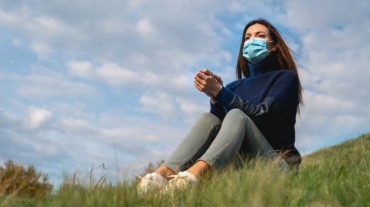
Former VJ-turned-content creator Shenaz Treasury recently took a high-altitude trip to Ladakh and Leh. However, during her stay, she had to battle altitude sickness and learned about acclimatization at 3,500 meters above sea level but in a hard way.
In her recent Instagram post, she revealed that she wasn’t fully prepared for her trip. “Ladakh was a difficult one for me. I wasn’t prepared for it — thin oxygen levels that make you gasp for air, nausea, headaches! Now I know what to expect – next time, I will be prepared,” she captioned the post.
Check it out here:
In fact, in her previous Instagram post, she had shared her experience with chest pain and breathlessness as she learned about acclimatization. For those caught unaware, acclimatization is the process in which an individual adjusts to a change in his/her environment with an aim to maintain fitness across a range of environmental conditions.
“My heart is pumping too fast. It’s confusing as usual. My oxygen levels are too low,” shared the travel enthusiast who recently shared her struggle with a condition called Prosopagnosia.
According to a study published in Deutsches Ärzteblatt, a German medical magazine, “With increasing altitude, the air pressure falls, and with it, the PO2 (partial pressure of oxygen) in inhaled air, the arterial PO2, and the O2 saturation of the blood. Hypoxemia is registered by peripheral chemoreceptors, leading to hyperventilation.” Hyperventilation means rapid or deep breathing that is mostly caused by anxiety or panic
“The main risk factors for acute mountain sickness, high-altitude cerebral edema, and high-altitude pulmonary edema are a lack of acclimatization, individual susceptibility, rapid ascent, and high altitude,” the study added.
Select Topics of your interest and let us customize your feed.
PERSONALISE NOWThe main symptom of acute altitude sickness is headache, along with other non-specific symptoms such as dizziness, anorexia, nausea, and sleep disturbance.
Also, read: Study suggests that people living on higher altitudes have a low risk of stroke
The main idea behind acclimatization is to improve the oxygen supply to the body’s tissues. “This can be achieved by descent, by supplemental oxygen administration, or by raising the pressure of inhaled air with portable pressure bags,” mentioned the study.

Treasurywala, in her post, also shared some tips and remedies that can come handy during high altitude travel:
1. Camphor as it helps you breathe easily
2. Ginger to relieve nausea
3. Butter to get the energy (calories) and keep the skin and lips moisturized
4. Water to stay hydrated
5. Oxygen from an oxygen cylinder
6. Oximeter to monitor oxygen levels
7. Garlic for blood circulation as it improves immunity, and cleanses the blood.